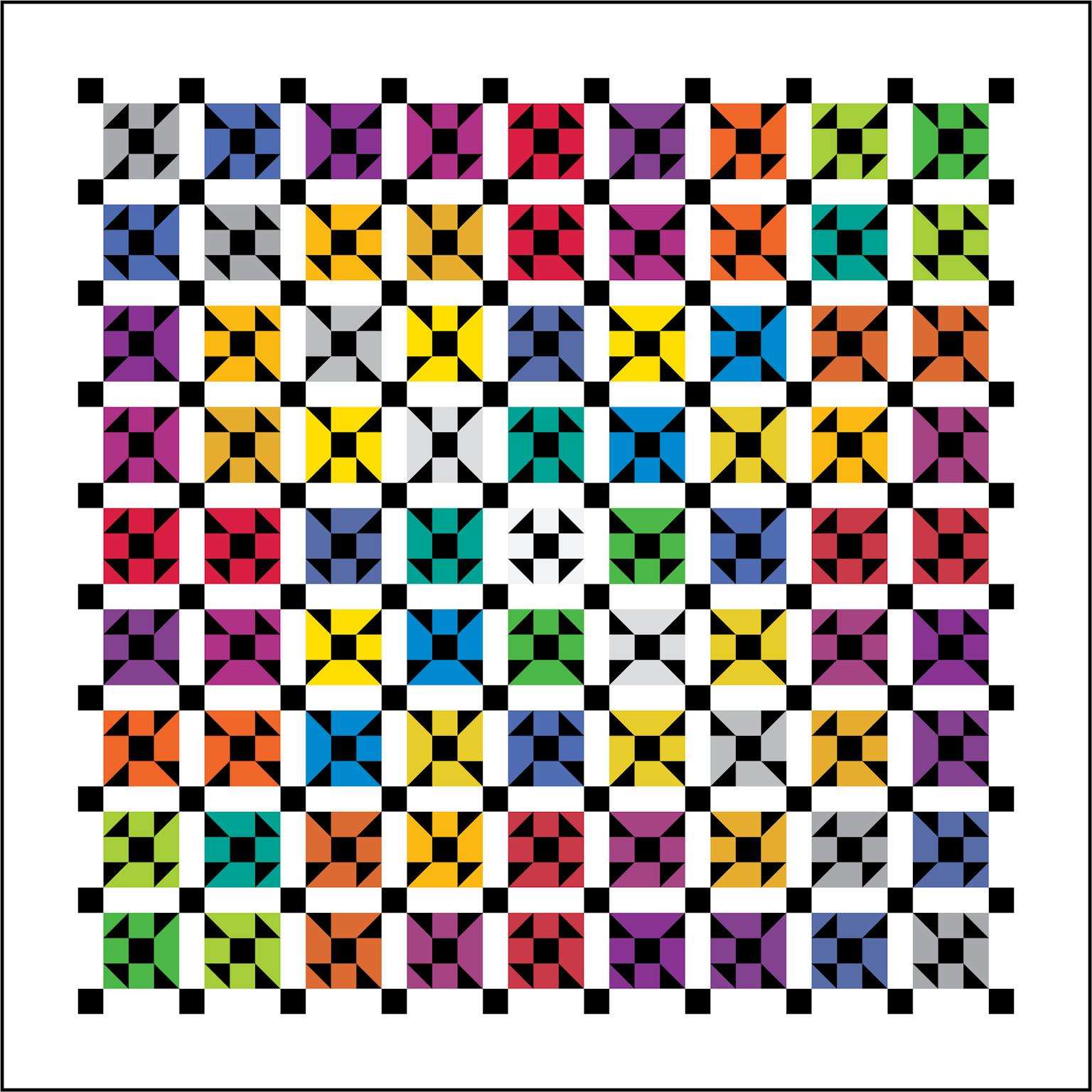2024 Joint Mathematics Meetings
Margaret Kepner
Artists
Margaret Kepner
Independent Artist
Washington, District of Columbia, USA
Statement
I enjoy expressing mathematical concepts through attributes such as color, geometric forms, and patterns. I have a background in mathematics, which provides me with a never-ending supply of subject matter, while my lifelong interest in art gives me a vocabulary and references to use in my work. Recently, I have been exploring traditional quilt patterns and puzzles, modifying their component shapes, and identifying underlying symmetries. Mathematical concepts are used to assign color values and other visual properties.
Artworks

Shoofly Shuffle
50.0 x 50.0 cm
Archival Inkjet Print
2023
The shape in the center of this piece is the “classic” Shoofly shape used in traditional quilting patterns: a square surrounded by four right triangles, oriented with their right angles touching the corners of the square. If the triangles are allowed to rotate by 90 degrees, as long as they still touch the central square, 81 “mutant” Shoofly variations are generated. Although each one is unique, just 24 shapes can generate all 81 variations via rotations. If reflection is also allowed, a set of 15 basic shapes will suffice. Depending on its symmetry properties, each of the 15 shapes can generate families of 1, 2, 4, or 8 shapes. The color of the background square for each mutant Shoofly links these families and provides visual interest.

General MacMahon
50.0 x 50.0 cm
Archival Inkjet Print
2023
The MacMahon Squares were initially introduced as the basis of an edge-matching puzzle. The 24 puzzle pieces display all permutations of three colors on the four edges of a square. To solve the puzzle, the pieces must be arranged in a 4x6 rectangle such that all adjacent edges match in color, and only one color appears on the outside border of the rectangle. In this work, the McMahon squares are generalized to include all 81 combinations of 3 edge colors, and displayed in a 9x9 array. The inner squares show the particular MacMahon Square that corresponds to each larger one; their relative sizes reflect their symmetry properties. One of the solutions to the edge-matching puzzle is suggested by the squares floating outside the 9x9 array.